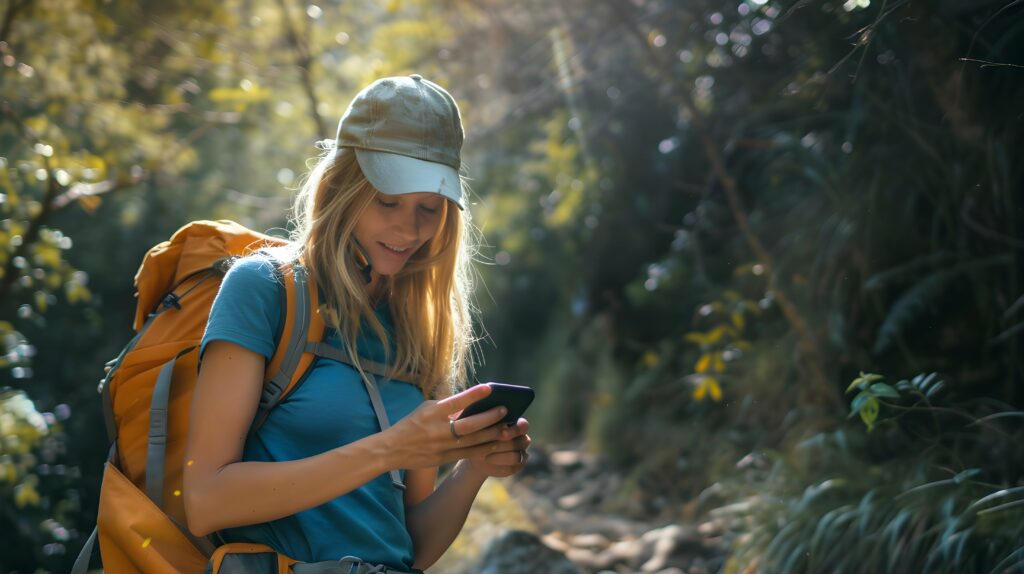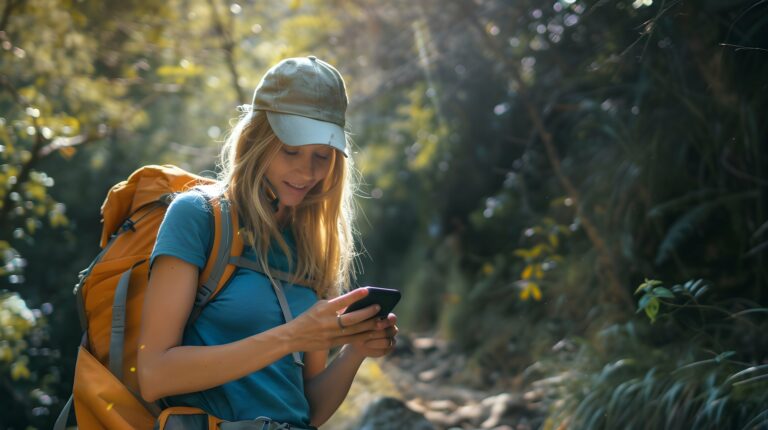Mobile Commerce for Outdoor Brands
The best trails are winding, challenging, and rewarding—much like the journey to increasing website traffic as an outdoor brand. If you’re coming up short on mobile traffic that leads to sales and engagement, you just need a look at the trail map to plan your course.
We’re sharing actionable mobile e-commerce advice and tips to move the needle on your website traffic with mobile customers who are ready to buy.
Why Mobile Traffic is Important for Outdoor Brands
A strong mobile channel is a must for outdoor brands. Why is mobile optimization needed for e-commerce? It’s the main way users access websites and content online today—nearly 64% of internet traffic and 77% of e-commerce traffic comes from mobile devices. Most of your potential customers are using smartphones and tablets to engage with your brand and products. That’s why making sure your website and content are optimized for mobile screens is a critical piece of mobile e-commerce advice.
How Outdoor Brands Can Generate Mobile Traffic
When you implement the right data-driven insights and strategies, you can increase the number of mobile users visiting your site. In turn, you can boost sales and brand awareness while riding that sweet mobile wave.
Do outdoor brands need to invest in digital marketing to drive traffic? You bet. Digital marketing—on-page, off-page, and technical SEO, content, and social media marketing—are all key components of a traffic-boosting digital marketing strategy.
Effective SEO
Effective SEO for outdoor brands is shown to increase website traffic, and targeting mobile users specifically with on-page, off-page, and technical SEO builds a strong foundation to boost mobile traffic to your site.
On-Page SEO
Search engines “read” what’s on your website pages to determine where to rank it in results. On-page SEO encompasses keywords, content, and more that can help you rank higher and increase traffic.
- Target and track keywords: Use free or paid tools to discover relevant keywords your target audience is searching for. Long-tail keywords are easier to rank for and drive more traffic than short-tail keywords.
- Plug your keywords into the right places: Your website’s title tags, headings (H1, H2, etc.), body text (content), image file names, image alt text, and meta descriptions should all contain the keyword you’re targeting for that page.
- Optimize for local search: Gear some content toward local users by creating location-specific content and keywords. Make sure your My Business, Google Maps, and Google Shopping profiles are optimized with all details filled in: Encouraging local reviews can give you a boost in search results, too.
Off-Page SEO
When another website links to your site—the homepage, a blog post, or one of your products—that’s a backlink. Off-page backlinks “vouch” for your brand and tell Google you’re established with some level of expertise.
Build a library of quality backlinks from authoritative websites to boost your SERP rankings and drive more mobile traffic. Backlink-building strategies include:
- Outreach to major sites in the outdoor and adjacent industries
- Industry expert interviews with established sites
- Top-notch content creation to encourage backlinks
Technical SEO
Technical SEO for outdoor brands is everything behind the scenes that play into how high your pages rank in SERPs. Since these aspects are much more complex, consider linking up with a reputable SEO agency to handle technical SEO audits and implement the following solutions for you.
- Fast page load speeds: Mobile users won’t hesitate to leave a slow site and shop with a competitor; Google also penalizes slow load speeds.
- Mobile-responsive design: You’ve visited a non-mobile-optimized site at some point—your annoyance grows as you pinch, zoom, and turn your phone to try and access a button that’s always just out of reach. Don’t be that website. We’ll cover this in more detail below.
- Enhanced website security: Google prioritizes secure websites with HTTPS encryption, HTTP3 protocols, and SSL certificate chains in search results.
- Accurate schema markup: These HTML tags help search engines identify your website page components to properly display them in search results and snippets, as well as improve CTRs for increased traffic.
More traffic occurs on mobile devices than on desktops, so a mobile-friendly site is crucial. Here’s the mobile-responsiveness checklist every outdoor website should use:
- Run the Google Mobile-Friendly Test
- Move to a responsive design that adapts to different screen sizes
- Increase website speed with image resizing, minified code, and reduced HTTP requests
- Write mobile-friendly content: smaller chunks, plenty of headings, and a user-friendly font
We get a lot of questions from our outdoor clients on specific mobile-friendliness topics, like “How do you layout a products page to fit on a screen?” If you lack experience in web development, it’s best to engage experts to help you transition to a mobile-friendly layout. This involves using CSS media queries to automatically adjust the layout for different screen sizes, resizing images appropriately, and creating flexible content containers to ensure text and images fit well on the screen.
Content Marketing
Outdoor brands that blog can drive 55% more traffic than brands that don’t. Create outstanding content that offers value, like thorough guides and how-tos, educational posts, expert tips and advice, and industry news round-ups. It can boost your rank on search engine results pages (SERPs) and drive more mobile traffic.
Here’s how to create content that translates into traffic:
- E-E-A-T: Google prioritizes content with E-E-A-T principles that showcase your experience, expertise, authority, and trustworthiness on the topic. As an established outdoor brand, use your content to demonstrate that you know your stuff.
- Promote consistently: Use your social media pages, email lists, and SEO strategies to promote content to your warm leads and drive traffic from mobile.
- Headlines that turn heads: Craft compelling headlines to drive up to 500% more traffic and rope in more readers who become buyers.
Social Media Marketing
Your outdoor brand needs a strong presence on social media platforms to drive more traffic. Building a good following on the platforms that resonate best with your audience (Facebook, Instagram, YouTube, etc.) helps you tap into a steady stream of warm leads and mobile-referred traffic.
- Craft engaging captions to share with content that drives users to your site.
- Jump in on new trends to take advantage of upticks in traffic.
- Post videos—86% of marketers say it drives more traffic. Since over 75% of videos are viewed on mobile devices, you’ll see more mobile users visiting.
- Post at optimal times to maximize your reach.
- Tag industry publications, news sites, and influencers in the outdoor world when you share new content.
- Get industry influencers and brand ambassadors to create user-generated content on your products and brand (unboxing videos, reviews, use tips, etc.).
Mobile Commerce: Tips for Better Conversions
We’ve explained how to generate traffic from mobile users—now, let’s talk about converting that traffic into sales.
- Make sure your site and checkout experience are mobile-friendly for a seamless experience.
- Track the user journey to see traffic referral sources, sales funnel drop-offs, and demographics that help you optimize your site for conversions.
- Videos help 87% of marketers boost sales from mobile users, so make videos showing how to use your products or highlighting features.
- Add live chat to let potential customers get answers that may motivate them to continue with a purchase.
- Track abandoned carts and send automated email reminders or discount codes to complete the purchase.
You can also try a few other ways to turn your increased traffic into conversions:
- Use seasonal marketing—drum up anticipation in the off-season, then ramp up for your products’ peak season period with more content and ads.
- Inspire brand loyalty with exclusive rewards, discounts, or early access to promotions to encourage more conversions.
- Target related keywords beyond your brand to reach more sales-ready customers, like writing a blog on the best time to snowboard in your location.
From Trails to Traffic and Transactions
On the trail to building more traffic from mobile users, squirrel away the tips outlined in this guide to bring more targeted customers to your website. The more traffic you get, the higher your sales potential rises. Mobile optimization strategies help outdoor brands tap into the growing mobile e-commerce market and stay competitive in the outdoor industry. From effective SEO tactics to content and social media marketing strategies, refining your website with mobile responsiveness in mind is a smart way to sell more.
Ready to hit the trail with an influx of targeted traffic? Start optimizing your website for mobile traffic and conversions today by talking with an SEO expert.


